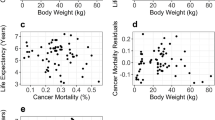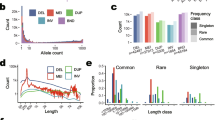Abstract
Cattle temperament is a complex trait, and molecular studies aimed at defining this trait are scarce. We used an interaction networks approach to identify new genes (interacting genes) and to estimate their effects and those of 19 dopamine- and serotonin-related genes on the temperament traits of Charolais cattle. The genes proopiomelanocortin (POMC), neuropeptide Y (NPY), solute carrier family 18, member 2 (SLC18A2) and FBJ murine osteosarcoma viral oncogene homologue (FOSFBJ) were identified as new candidates. Their potential to be associated with temperament was estimated according to their reported biological activities, which included interactions with neural activity, receptor function, targeting or synthesis of neurotransmitters and association with behaviour. Pen score (PS) and exit velocity (EV) measures were determined from 412 Charolais cows to calculate their temperament score (TS). Based on the TS, calm (n = 55; TS, 1.09 ± 0.33) and temperamental (n = 58; TS, 2.27 ± 0.639) cows were selected and genotyped using a 248 single-nucleotide variation (SNV) panel. Of the 248 variations in the panel, only 151 were confirmed to be polymorphic (single-nucleotide polymorphisms; SNPs) in the tested population. Single-marker association analyses between genotypes and temperament measures (EV, PS and/or TS) indicated significant associations of six SNPs from four candidate genes. The markers rs109576799 and rs43696138, located in the DRD3 and HTR2A genes, respectively, were significantly associated with both EV and TS traits. Four markers, rs110365063 and rs137756569 from the POMC gene and rs110365063 and rs135155082 located in SLC18A2 and DRD2, respectively, were associated with PS. The variant rs110365063 located in bovine SLC18A2 causes a change in the amino acid sequence from Ala to Thr. Further studies are needed to confirm the association of genetic profile with cattle temperament; however, our study represents important progress in understanding the regulation of cattle temperament by different genes with divergent functions.


Similar content being viewed by others
References
Banlaki Z, Elek Z, Nanasi T, Szekely A, Nemoda Z, Sasvari-Szekely M, Ronai Z (2015) Polymorphism in the Serotonin Receptor 2a (HTR2A) gene as possible predisposal factor for aggressive traits. PLoS One 10, e0117792. doi:10.1371/journal.pone.0117792
Buchenauer D (1999) Genetics of behaviour in cattle. In: Fries R, Ruvinsky A (eds) The genetics of cattle. CABI Publishing, Wallingford, pp 365–390
Burdick NC, Agado B, White JC, Matheney KJ, Neuendorff DA, Riley DG, Vann RC, Welsh TH Jr, Randel RD (2011) Technical note: Evolution of exit velocity in suckling Brahman calves. J Anim Sci 89:233–236. doi:10.2527/jas.2010-2973
Burrow HM, Dillon RD (1997) Relationships between temperament and growth in a feedlot and commercial carcass traits of Bos indicus crossbreds. Aust J Exp Agric 37:407–411. doi:10.1071/EA96148
Campbell BT (2012) Improving beef cattle performance on tall fescue. PhD dissertation. University of Tennessee, Knoxville, TN, USA. Available online at: http://trace.tennessee.edu/utk_graddiss/1277. Accessed 23 February 2016
Cooke RF (2014) Bill E. Kunkle Interdisciplinary Beef Symposium: Temperament and acclimation to human handling influence growth, health, and reproductive responses in Bos taurus and Bos indicus cattle. J Anim Sci 92:5325–5333
Deobald HM, Buchanan FC (2011) Characterization of two pro-opiomelanocortin gene variants and their effects on carcass traits in beef cattle. BMC Genet 12:2. doi:10.1186/1471-2156-12-2
Glenske K, Prinzenberg EM, Brandt H, Gauly M, Erhardt G (2011) A chromosome-wide QTL study on BTA29 affecting temperament traits in German Angus beef cattle and mapping of DRD4. Animal 5:195–197. doi:10.1017/S1751731110001801
Hammond AC, Olson TA, Chase CC Jr, Bowers EJ, Randel RD, Murphy CN, Vogt DW, Tewolde A (1996) Heat tolerance in two tropically adapted Bos Taurus breeds, Senepol and Romosinuano, compared with Brahman, Angus, and Hereford cattle in Florida. J Anim Sci 74:295–303
Hiendleder S, Thomsen H, Reinsch N, Bennewitz J, Leyhe-Horn B, Looft C, Xu N, Medjugorac I, Russ I, Kühn C, Brockmann GA, Blümel J, Brenig B, Reinhardt F, Reents R, Averdunk G, Schwerin M, Förster M, Kalm E, Erhardt G (2003) Mapping of QTL for body conformation and behavior in cattle. J Hered 94:496–506. doi:10.1093/jhered/esg090
Hulsman Hanna LL, Garrick DJ, Gill CA, Herring AD, Riggs PK, Miller RK, Sanders JO, Riley DG (2014) Genome-wide association study of temperament and tenderness using different Bayesian approaches in a Nellore–Angus crossbred population. Livest Sci 161:17–27
Krejci E, Gasnier B, Botton D, Isambert MF, Sagné C, Gagnon J, Massoulié J, Henry JP (1993) Expression and regulation of the bovine vesicular monoamine transporter gene. FEBS Lett 335:27–32. doi:10.1016/0014-5793(93)80432-T
Liu WC, Chen SY, Jia XB, Wang J, Lai SJ (2014) Effects of variants in proopiomelanocortin and neuropeptide y genes on growth, carcass, and meat quality traits in rabbits. Asian-Australas J Anim Sci 27:609–615. doi:10.5713/ajas.2013.13807
Lohr KM, Stout KA, Dunn AR, Wang M, Salahpour A, Guillot TS, Miller GW (2015) Increased vesicular monoamine transporter 2 (VMAT2; Slc18a2) protects against methamphetamine toxicity. ACS Chem Neurosci 6:790–799. doi:10.1021/acschemneuro.5b00010
Lühken G, Glenske K, Brandt H, Erhardt G (2010) Genetic variation in monoamine oxidase A and analysis of association with behaviour traits in beef cattle. J Anim Breed Genet 127:411–418. doi:10.1111/j.1439-0388.2010.00855.x
Moioli B, Napolitano F, Catillo G (2014) A selective genotyping approach identifies QTL in a simulated population. BMC Proc 8(Suppl 5):S5. doi:10.1186/1753-6561-8-S5-S5
Momozawa Y, Takeuchi Y, Kusunose R, Kikusui T, Mori Y (2005) Association between equine temperament and polymorphisms in dopamine D4 receptor gene. Mamm Genome 16:538–544. doi:10.1007/s00335-005-0021-3
Mormède P (2005) Molecular genetics of behaviour: research strategies and perspectives for animal production. Livest Prod Sci 93:15–21. doi:10.1016/j.livprodsci.2004.11.002
Mortensen OV, Kristensen AS, Rudnick G, Wiborg O (1999) Molecular cloning, expression and characterization of a bovine serotonin transporter. Mol Brain Res 71:120–126. doi:10.1016/S0169-328X(99)00178-3
Neville MJ, Johnstone EC, Walton RT (2004) Identification and characterization of ANKK1: a novel kinase gene closely linked to DRD2 on chromosome band 11q23.1. Hum Mutat 23:540–545. doi:10.1002/humu.20039
Nkrumah JD, Crews DH Jr, Basarab JA, Price MA, Okine EK, Wang Z, Li C, Moore SS (2007) Genetic and phenotypic relationships of feeding behavior and temperament with performance, feed efficiency, ultrasound, and carcass merit of beef cattle. J Anim Sci 85:2382–2390. doi:10.2527/jas.2006-657
Norris D, Ngambi JW, Mabelebele M, Alabi OJ, Benyi K (2014) Genetic selection for docility: a review. J Anim Plant Sci 24(2):374–379
Paredes-Sánchez FA, Sifuentes-Rincón AM, Segura Cabrera A, García Pérez CA, Parra Bracamonte GM, Ambriz Morales P (2015) Associations of SNPs located at candidate genes to bovine growth traits, prioritized with an interaction networks construction approach. BMC Genet 16:91. doi:10.1186/s12863-015-0247-3
Rousset F (2008) GENEPOP’007: a complete re-implementation of the GENEPOP software for Windows and Linux. Mol Ecol Resour 8:103–106. doi:10.1111/j.1471-8286.2007.01931.x
Rubinstein M, Phillips TJ, Bunzow JR, Falzone TL, Dziewczapolski G, Zhang G, Fang Y, Larson JL, McDougall JA, Chester JA, Saez C, Pugsley TA, Gershanik O, Low MJ, Grandy DK (1997) Mice lacking dopamine D4 receptors are supersensitive to ethanol, cocaine, and methamphetamine. Cell 90:991–1001. doi:10.1016/S0092-8674(00)80365-7
Schmidt SE, Neuendorff DA, Riley DG, Vann RC, Willard ST, Welsh TH Jr, Randel RD (2014) Genetic parameters of three methods of temperament evaluation of Brahman calves. J Anim Sci 92:3082–3087
Schmutz SM, Stookey JM, Winkelman-Sim DC, Waltz CS, Plante Y, Buchanan FC (2001) A QTL study of cattle behavioral traits in embryo transfer families. J Hered 92:290–292. doi:10.1093/jhered/92.3.290
Sherman EL, Nkrumah JD, Murdoch BM, Li C, Wang Z, Fu A, Moore SS (2008) Polymorphisms and haplotypes in the bovine neuropeptide Y, growth hormone receptor, ghrelin, insulin-like growth factor 2, and uncoupling proteins 2 and 3 genes and their associations with measures of growth, performance, feed efficiency, and carcass merit in beef cattle. J Anim Sci 86:1–16. doi:10.2527/jas.2006-799
Sifuentes-Rincón AM, Trejo-Tapia AG, Randel RD, Ambriz-Morales P, Parra-Bracamonte GM (2016) Bovine dopamine receptors DRD1, DRD4, and DRD5: genetic polymorphisms and diversities among ten cattle breeds. Genet Mol Res 15(1), gmr.15017725
Smith SM, Vale WW (2006) The role of the hypothalamic-pituitary-adrenal axis in neuroendocrine responses to stress. Dialogues Clin Neurosci 8:383–395
Supek F, Miñana B, Valcárcel J, Gabaldón T, Lehner B (2014) Synonymous mutations frequently act as driver mutations in human cancers. Cell 156:1324–1335. doi:10.1016/j.cell.2014.01.051
Våge J, Lingaas F (2008) Single nucleotide polymorphisms (SNPs) in coding regions of canine dopamine- and serotonin-related genes. BMC Genet 9:10. doi:10.1186/1471-2156-9-10
Wolf EJ, Mitchell KS, Logue MW, Baldwin CT, Reardon AF, Aiello A, Galea S, Koenen KC, Uddin M, Wildman D, Miller MW (2014) The dopamine D3 receptor gene and posttraumatic stress disorder. J Trauma Stress 27:379–387. doi:10.1002/jts.21937
Zhang Y, Feng XH, Derynck R (1998) Smad3 and Smad4 cooperate with c-Jun/c-Fos to mediate TGF-beta-induced transcription. Nature 394:909–913. doi:10.1038/29814
Zhang CL, Wang YH, Chen H, Lei CZ, Fang XT, Wang JQ, Ma GB, Niu H, Xiao J (2009) The polymorphism of bovine POMC gene and its association with the growth traits of Nanyang cattle. Yi Chuan 31:1221–1225. doi:10.3724/SP.J.1005.2009.01221
Acknowledgements
The authors thank the different herd owners for supporting the cattle sampling and temperament measurements. We acknowledge financial support from research grants FOMIX-Tamaulipas 177460 and SIP-IPN 20161076.
Author information
Authors and Affiliations
Corresponding author
Additional information
Communicated by: Maciej Szydlowski
Implications
The serotonin and dopamine signalling systems are essential for different behavioural phenotypes in both invertebrates and vertebrates. Studies focused on the genetic basis of behaviour in cattle are scarce. As enough evidence supports the importance of behavioural traits on the productivity of beef cattle of different breeds, the identification of intrinsic genetic sources of variation could be of fundamental application by facilitating the selection of appropriate temperament genotypes. Selecting livestock with greater docility has positive benefits for improving beef cattle performance, in addition to improving human safety and animal welfare.
Rights and permissions
About this article
Cite this article
Garza-Brenner, E., Sifuentes-Rincón, A.M., Randel, R.D. et al. Association of SNPs in dopamine and serotonin pathway genes and their interacting genes with temperament traits in Charolais cows. J Appl Genetics 58, 363–371 (2017). https://doi.org/10.1007/s13353-016-0383-0
Received:
Revised:
Accepted:
Published:
Issue Date:
DOI: https://doi.org/10.1007/s13353-016-0383-0




